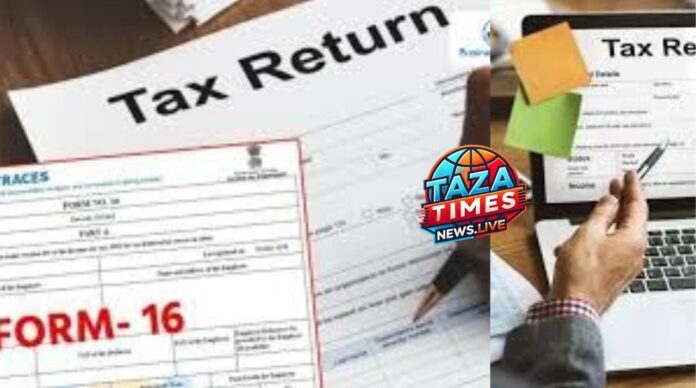ITR Filing 2025 : The deadline for submitting your Income Tax Return (ITR) has been extended. Experts believe that taxpayers should finish their preparations regardless of the deadline extension. Salaried taxpayers, however, cannot file income tax returns until they get Form 16. Form 16 is issued by employers to their employees. This is required for submitting income taxes. It includes details regarding the employees’ salary income, TDS, and deductions.
ITR Filing 2025: This year, ITR forms have undergone numerous adjustments.
The Income Tax Return forms have undergone several adjustments this year. The government amended the capital gains tax laws in the Union Budget, which was presented in July last year. Then, in the February budget, the administration modified the tax slabs in the new income tax regime. As a result, it became necessary to update the income tax forms. Until last year, ordinary resident Indian taxpayers may use ITR-1 (Sahaj) if their only sources of income were salary/pension, one residential property, interest from savings/fixed deposits, dividends, and agricultural income of less than Rs 5000 each.

You can now utilize ITR-1 on LTCG as well.
This year, if a taxpayer makes long-term capital gains by selling listed shares or units of a mutual fund’s equity plan, he can still utilize the ITR-1 Form. The sole constraint is that capital profits do not exceed Rs 1.25 lakh in FY25. In this way, the government broadened the usage of ITR-1, often known as the Sahaj form. This is excellent news for taxpayers, particularly salaried taxpayers.
Table of Contents
ITR-1 is the easiest to use.
ITR-1 is the simplest form. It is for salaried or pension-eligible taxpayers with few sources of income. This form already contains a large amount of information. For example, pre-filling of income details and financial transaction information makes filing forms more easier. Taxpayers can compare the data on the ITR-1 form to the data on Form 16, AIS, and Form 26AS.
Terms of Use of ITR-1
The Sahaja, or ITR-1 form, can only be utilized by individual taxpayers with an annual income of less than Rs 50 lakh. Their earnings should be limited to a salary/pension, one house property, interest on savings/fixed deposits, dividends, and agricultural income of less than Rs 5,000. Beginning this year, taxpayers who have made long-term capital gains of less than Rs 1.25 lakh from the sale of equity mutual fund shares or units can use this form as well.

Using ITR-2 in these cases
If a taxpayer’s annual income exceeds Rs 50 lakh, he cannot use ITR-1. If a taxpayer’s long-term capital gains exceed Rs 1.25 lakh in a given fiscal year, he cannot file ITR-1. If a taxpayer serves as a director of a firm, he cannot use ITR-1. If a taxpayer owns stock in a non-listed corporation, he cannot file ITR-1. If there is income from overseas, the ITR-1 cannot be used. In such cases, taxpayers must complete the ITR-2 form.
you join our tazatimesnews Telegram Channel
you join our whatsapp channel
Next News Read – 5 Powerful Vastu Remedies for Money Flow and Financial Stability



